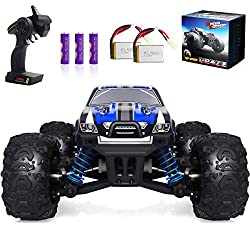
You can update your old car with the most current technology if it is in dire need. These days, you can find anything from parking sensors to Rearview cameras to a modern Touchscreen head unit for your car. You can even find options specific to your vehicle. However, before you make any changes to your car, first take a look at it and determine what needs to be updated.
Rearview camera
You can retrofit your car with new technology, regardless of its age. You don’t have to give up your old car. Instead, you can retrofit it with modern safety features and convenience features for a modest fee. You can also DIY upgrades to your car. Keep reading to learn more. We'll be discussing the most current options for converting an existing car to a contemporary one.

Parking sensors
If you are thinking about buying a new car, but are concerned about safety features, you may want to install a rearview camera and parking sensors on your existing car. These safety features can help reduce blind spots, and keep your car from getting stuck in tight parking spaces. You don't need to spend a lot. These systems are available from many manufacturers starting at $100. Here are some of the most important reasons why.
Touchscreen head unit
Old cars can have a difficult touchscreen head unit, but aftermarket ones are easy to make. The models of today have Bluetooth connectivity, climate control, and Wi-Fi connectivity. The best part is that aftermarket touchscreen head unit can be used for almost any car-related project. Even if your car was built in the 1990s, an Android-powered unit can be installed.
Parallel parking
You might be wondering how you can parallel park an antique car. This task required manual maneuvering and was not easy in the 1930s. A clever inventor discovered a way to solve the problem. While not named, the invention appears to date back to 1933. The Tesla Model S, which is equipped with ultrasonic sensor technology, can be parked in spaces that are 22 per cent smaller than the ones it replaces. Although initially the invention was limited to parking in tight corners, it is now possible to use the technology for more vehicles.
Changing rubber brake hoses for stainless steel
It's a good idea to switch rubber brake shoes for stainless-steel ones if you have an old car. The brake line is the most exposed component of a car, and can be damaged by environmental factors like UV rays or road debris. This can lead to corrosion within the brake line and reduce its structural integrity. A new hose will help your car brake more reliably and prevent brake system failure.

Add a touchscreen to an old car
Many people wonder whether it is possible for an old car to have a touchscreen unit. The answer is yes. The first step is to determine which touchscreen head unit fits in your car. The majority of new models include climate control and touchscreens. If your car doesn’t have a touchscreen or climate control, you will need measure the dash and decide what size to buy.
FAQ
Is it possible to work as an automotive mechanic?
It can be done. Many garages advertise their vacancies online, and many people apply just because they think it might be fun. If you want to get your foot in the door, you should try applying for a few places and see if they accept student applications. If you don't know anyone working in the industry, ask your friends and relatives. They might be willing to recommend someone.
Do I need to have a degree to work as an automotive mechanic? Can I study part-time?
Although it's not mandatory, a degree can help. Employers are more likely to hire candidates who have completed a complete degree. It shows that you've worked hard and are determined to succeed.
You can still study while working, however. Some universities let students complete their coursework in the summer and then continue their studies during the school year. Some universities allow students to take part-time classes throughout the year.
What jobs are available for car mechanics?
Car mechanics can find work in three areas:
-
Automotive repair shops
-
Dealerships
-
Independent garages
Automotive repair shops
Most people think of this as the first step to becoming a mechanic. It's also the easiest way you can get started. Either you can work in a shop that is owned by another person or start your own business.
If you choose to work at a store, you need to join a union. After you are accepted to the union, you will receive training from it.
Once you complete the training, it's time to get started.
If you plan to open your own garage you will need to register with government. After you register, you will be required to meet specific standards.
When you've registered, you'll be given a license to operate your garage.
Your license allows for minor repairs and spare parts sales. You can't fix major engine problems with your license.
Customers will expect you to not only sell spare parts but also provide advice and guidance.
Dealership jobs
Most dealerships only employ mechanics who have a specific skill set. They might specialize in one area, such as brakes and tires.
Some dealers also have general mechanics that can handle all aspects.
These positions often require applicants that they undergo special training before being allowed work. Employers are able to choose which candidates will best suit their position.
Some dealerships will hire graduates straight from college. These graduates already know the basics of mechanical engineering and therefore have no problem learning about cars.
Independent garages
Independent garages don't belong to any particular dealership. Instead, they tend to focus on providing high-quality service.
Because independent garages aren't affiliated with any company, they can afford to pay higher wages. Because these jobs don't have to be associated with any company, they can generally offer better wages than dealerships.
Independent garages don't necessarily make for better work environments. Many business owners prefer to be in control of their businesses than to delegate it to employees.
So you may find yourself working long hours without having any say over what happens during the day.
You should also expect to earn lower wages than if you were employed at a dealership.
It's possible to switch between jobs. You can switch jobs easily if you are interested in working at a dealership. Simply ask your employer if they would be open to hiring you as a mechanic.
If you prefer to work in an independent garage, you might consider applying directly to its owner.
The bad news? Finding a new position isn't always easy. You can earn more depending on many other factors.
Consider, for example, what type of vehicle you are repairing and whether additional labor charges will apply.
How long is an automotive mechanic apprenticeship
An automotive mechanic apprenticeship takes around three years to complete. The apprenticeship includes two years studying at school and two more as an apprentice. The first year of training is spent in the trade. This includes theory and practical skills as well as safety procedures. This year, you will also learn how to safely and efficiently use tools. You'll spend the second year in on-the-job training, where you will gain experience in various trades. These are also the times you can attend formal courses.
The last year of the program is dedicated to gaining certification and qualifications in the field. These include NVQs, which are obtained after passing industry-specific exams. The HNCs (Higher National Certificates), on the other hand, cover general subjects like customer service and management. City & Guilds certificates offer qualifications in certain trades.
What is the length of an automotive training course?
An automotive course is three years long.
The first year is dedicated to theory and learning about cars. The second year is dedicated towards practical training. This includes learning how to drive, fix engine problems, and doing other maintenance jobs around your car. The final year is spent doing a placement at a local garage, which gives you experience in fixing real-world problems.
Statistics
- According to the BLS, total auto technician employment is expected to exceed 705,000 by 2030. (uti.edu)
- The U.S. Bureau of Labor Statistics (BLS) reports that the job outlook for automotive service technicians and mechanics is expected to decline by 4% from 2019 to 2029. (indeed.com)
- According to the BLS, the median annual salary for automotive service technicians and mechanics in the United States was $44,050 in May 2020. (uti.edu)
External Links
How To
How to become an Automotive Technician
A technician who works on vehicles is an automotive technician. He/she can be found at auto shops, garages and service centers. He/she helps customers fix their cars, trucks, motorcycles, ATVs, boats, lawn mowers, snowmobiles, tractors, trailers, farm equipment, planes, helicopters, jet skis, watercraft, bicycles, motorcycles, scooters, golf carts, etc. An automotive technician must be capable of diagnosing problems and making repairs safely, accurately and efficiently.
An associate degree should be obtained from a vocational school if you wish to work as an auto technician. After completing this program, he/she must pass the National Institute for Automotive Service Excellence (ASE) certification exam. ASE stands for American Society of Mechanical Engineers. The ASE certification test consists of two sections. The first section tests your mechanical skills, while the second tests your practical knowledge. To take the test, you must visit one of the approved testing locations. These locations can be found online, or by contacting your local car dealer.
A candidate must pass the state exam after passing the test to become an automotive technician. This process varies depending on where the applicant lives. Some states require applicants to take a training course while others allow them the freedom to study on their own. Some states allow technicians to become licensed right away after receiving their license. While others wait until they have had at least six years of experience as an automotive technician.
To become an automotive technician, one must apply at a local dealership. Once hired, most new employees start out working as apprentices. Apprenticeship programs last about three years. The apprenticeship program teaches students how to change oil, adjust brakes, replace tires, clean spark plugs, inspect engine compartments, and perform routine maintenance. Advanced repairs can be done by some students, including replacing shocks, installing air filters and repairing engines. Schools offer classes during business hours. However, there are some schools that offer evening classes for those who need them.
Once a student completes his/her apprenticeship, he/she becomes a journeyman. Journeymen generally spend four- to five decades learning how to fix major systems like transmissions. They also learn to perform complex repairs, such as remanufacturing engines, rebuilding transmissions, and troubleshooting electrical components. Many employers prefer hiring journeymen because they know the job well and understand what the customer expects.
Once a candidate passes the required exams and is granted a license, they might consider opening their own shop. According to the Bureau of Labor Statistics, nearly 1.7 million automotive mechanic jobs were available in 2010. The Bureau of Labor Statistics predicted that this number would rise by 18% from 2009 to 2020. Candidates who decide to open their own business should be prepared to invest thousands in equipment and supplies.
Automotive technicians' salaries depend on many factors such as the employer, whereabouts, education level and experience. An average salary for a jobless individual is $20,000 per annum. Someone who has only a highschool diploma could earn around 21,000 dollars per year. A bachelor's degree is equivalent to approximately $24,000 annually. Technicians with a bachelor’s degree made about $27,000 annually. A master's degree earns around $32,000 per a year. A common trend is for salary increases to occur so a professional making less than $30,000 can reasonably expect to be earning $40,000 or more within a few years.